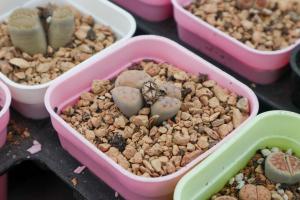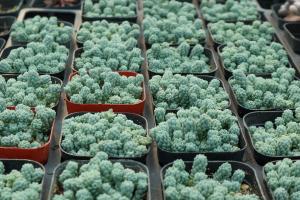When to Plant Fruit Trees in Zone 7a
If you live in Zone 7a, which includes parts of Virginia, North Carolina, Tennessee, Kentucky, and Arkansas, you are in luck when it comes to planting fruit trees. The relatively mild climate of this zone provides ideal conditions for growing a wide variety of fruit trees, including apples, pears, peaches, plums, and cherries. However, timing is everything when it comes to planting fruit trees. Here is everything you need to know about when to plant fruit trees in Zone 7a.
Best Time to Plant Fruit Trees
The best time to plant fruit trees in Zone 7a is in late winter or early spring, before new growth begins. This usually falls between February and April, depending on the specific location within the zone. Planting during this time allows the tree to establish its roots, ensuring it has a strong foundation for the growing season. Avoid planting during summer, as the heat can put stress on the tree, and autumn, as the ground may be frozen, making it difficult for the tree to establish its roots.
Choosing the Right Fruit Tree
When choosing a fruit tree, it is important to consider the climate and soil conditions of your specific location within Zone 7a. Some fruit trees may perform better in certain areas than others. For example, apple trees grow well in fertile, well-drained soil and require a chilling period during winter to produce fruit. Peach trees prefer soil with good drainage, full sun, and protection from frost. Plum trees grow best in loamy, well-drained soil and require a pollinator to produce fruit. Research different fruit trees before making a purchase to ensure you select the right one for your location.
Preparing the Soil
Before planting a fruit tree, it is important to prepare the soil to ensure the tree has the necessary nutrients and drainage to thrive. Start by testing the soil to determine its pH level, which should be between 6.0 and 7.0 for most fruit trees. If the pH level is too low, add lime to raise it. If the pH level is too high, add sulfur to lower it. Also, make sure the soil is well-drained and free of rocks and other debris. You can improve soil quality by adding organic matter, such as compost or aged manure, and tilling the soil to a depth of 12 inches.
Planting the Fruit Tree
When planting a fruit tree, dig a hole that is twice as wide and just as deep as the root ball. If the tree is grafted, make sure the graft union, which looks like a scar, is at least 2 inches above ground level. Spread the roots out in the hole and backfill with soil, making sure there are no air pockets. Water the tree well to settle the soil and mulch around the base of the tree to retain moisture and suppress weeds. Avoid fertilizing the tree at planting time, as this can burn the roots. Wait until new growth appears in the spring to fertilize.
Caring for the Fruit Tree
After planting, it is important to care for the fruit tree to ensure it continues to thrive. Water the tree regularly, especially during dry periods, and monitor for pests and diseases. Fertilize the tree in the spring after new growth appears, using a balanced fertilizer that is appropriate for your specific type of fruit tree. Prune the tree annually to remove dead, damaged or diseased wood and shape the tree to promote healthy growth. With proper care, your fruit tree will provide you with delicious fruit for years to come.
In conclusion, planting fruit trees in Zone 7a can be a rewarding experience, as long as you choose the right tree, prepare the soil, plant at the right time, and care for the tree properly. By following these guidelines, you will be well on your way to growing healthy fruit trees and enjoying the delicious fruit they produce.

 how many times do yo...
how many times do yo... how many planted tre...
how many planted tre... how many pine trees ...
how many pine trees ... how many pecan trees...
how many pecan trees... how many plants comp...
how many plants comp... how many plants can ...
how many plants can ... how many plants and ...
how many plants and ... how many pepper plan...
how many pepper plan...































